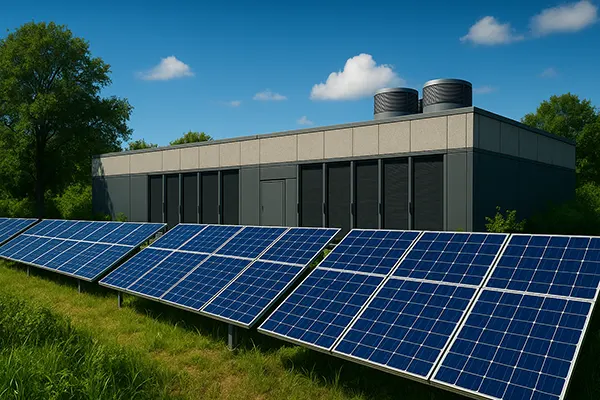
Green AI and Energy-Efficient Computing: Reducing the Environmental Footprint of Large Models
Artificial intelligence has become a driving force of innovation, but its rapid development carries a considerable environmental cost. The energy consumed by large AI models during training and operation has grown dramatically, contributing to rising carbon emissions worldwide. To address this, researchers and companies are focusing on energy-efficient computing, known as Green AI, to reduce the environmental footprint of these technologies.
The Rising Energy Demands of Large AI Models
Training advanced AI models requires enormous computational power and electricity. A single large model can consume megawatt-hours of energy, generating carbon emissions comparable to dozens of households’ annual usage. As models become larger and more complex, their training demands grow, making energy efficiency a crucial challenge.
In addition to training, deploying these models for real-time use also consumes significant energy. Data centres must maintain constant uptime, drawing continuous power for both computing and cooling infrastructure. The expansion of AI services globally has intensified this demand.
Regulators are responding to this trend. In 2025, the European Union and the United Kingdom are moving towards stricter requirements for renewable energy use in data centres running large-scale AI systems.
Strategies for Reducing Energy Consumption During Training
Algorithmic optimisation is one of the most promising methods to reduce energy use. Techniques like model pruning, quantisation, and knowledge distillation can significantly reduce the computational requirements of models without lowering accuracy.
Specialised hardware also plays a vital role. Modern AI chips are designed with energy-efficient architectures, allowing them to deliver high performance while using less power. These chips are becoming standard in AI-focused data centres in 2025.
Transfer learning further reduces energy costs by allowing developers to build new models based on pre-trained ones, avoiding the need to start training from scratch every time.
Data Centres and the Push for Renewable Energy
Data centres are central to AI operations, and their energy use contributes heavily to the sector’s carbon footprint. Many leading technology firms have committed to using renewable energy sources such as wind, solar, and hydro to power their facilities.
As of 2025, several large data centres in Europe operate predominantly on renewable energy, setting an industry benchmark. This transition is essential to mitigating the environmental impact of large-scale AI computing.
Energy storage solutions are also being deployed to stabilise renewable energy supplies. Battery systems store excess energy during peak production and release it during low-output periods, ensuring uninterrupted operations without fossil fuel reliance.
Cooling Innovations to Cut Energy Waste
Cooling is a major source of energy waste in data centres. Traditional air cooling consumes substantial power, prompting the industry to explore more efficient methods. One innovation is liquid immersion cooling, where servers are submerged in a thermally conductive fluid to dissipate heat more effectively.
Another method is using natural cooling from cold climates. Data centres in Nordic regions take advantage of low ambient temperatures, reducing the need for artificial cooling systems and lowering overall energy use.
AI-driven climate control systems are also being used to dynamically adjust cooling levels based on real-time workloads, further optimising energy consumption.

The Future of Green AI in 2025 and Beyond
The movement towards Green AI is gaining momentum as awareness grows about the environmental impact of digital technologies. Governments, companies, and research institutions are investing heavily in sustainable AI development to balance innovation with environmental responsibility.
Future AI systems are expected to prioritise efficiency by design, using less data, less energy, and more sustainable materials. These advancements will allow the sector to continue growing without proportionally increasing its ecological footprint.
Public awareness is also playing a role. Businesses are under increasing pressure to demonstrate environmental responsibility, and energy efficiency in AI operations is becoming a key factor in public trust and brand reputation.
Collaboration and Global Standards
International collaboration will be vital in shaping the future of Green AI. Shared standards on energy efficiency, reporting, and sustainability practices will help ensure that progress in AI does not come at the expense of the planet.
Organisations such as the International Energy Agency and the European Commission are working on guidelines for sustainable data centre operations, including specific benchmarks for AI workloads.
As these standards are adopted globally, they will encourage transparency, innovation, and competition in building greener AI systems, ensuring that technological growth aligns with global climate goals.
